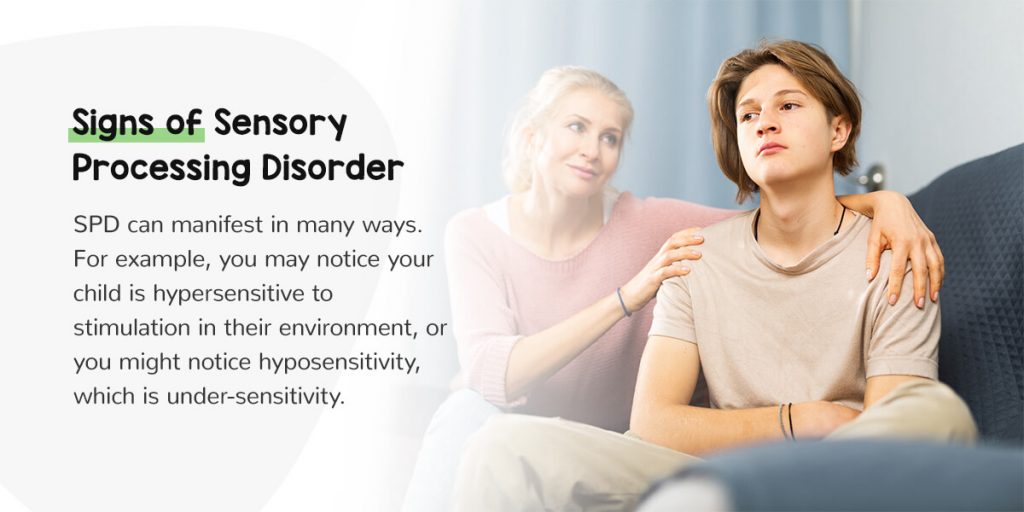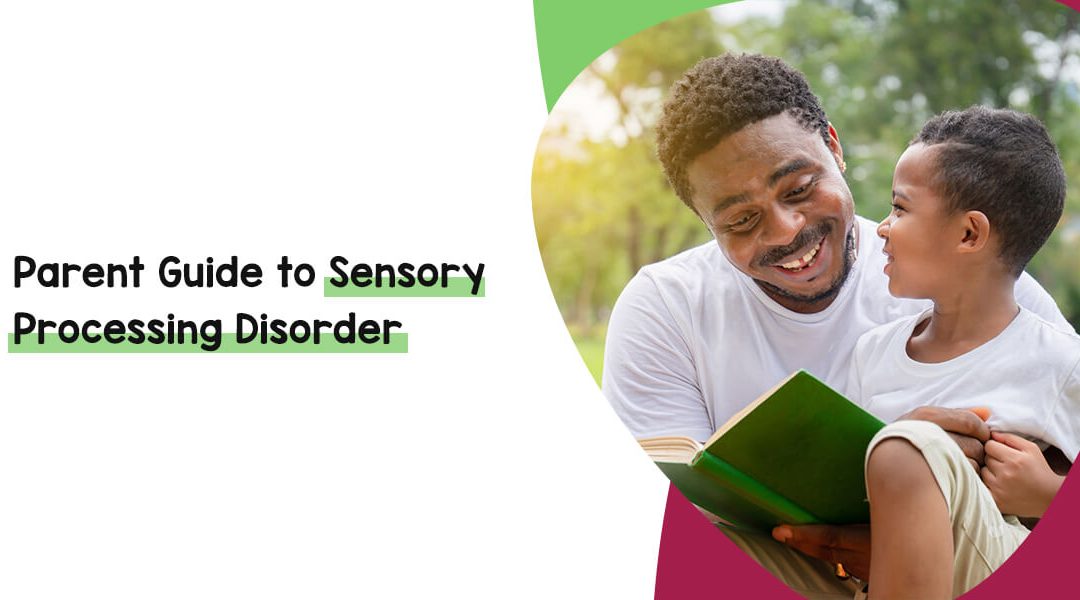While everyone has a unique perception of their environment, some children have difficulty processing the world around them. This difficulty can be expressed by emotional outbursts, behavioral issues and learning delays. If you notice related signs in your child, they may have sensory processing disorder (SPD).
What is sensory processing disorder? What does this condition mean for your child's development? This parent's guide to sensory processing disorder can help you understand SPD and how to help your child navigate it.
What Is Sensory Processing Disorder?
SPD is a neurological condition that impacts the way the brain processes information from the various senses. All senses can be affected by sensory processing disorder, including:
- The five basic senses: The five basic senses include vision, hearing, smell, taste, and touch. Those with sensory processing disorder may experience difficulty interpreting the information delivered by their senses, resulting in sensitivity to light, sound, smells, food and texture.
- Proprioception: This is the body's ability to sense location and movement. For example, proprioception ensures you can put one foot in front of the other and touch your nose without opening your eyes.
- Interoception: Take a moment to feel your heartbeat and feel yourself breathe. The sensation of what's happening inside of the body is known as interoception.
- Vestibular: The vestibular sense is our sense of balance. The inner ear plays a vital role in it, which allows us to move easily and remain balanced as we sit, stand, walk, and run.
SPD may not be officially diagnosed alone. It may be diagnosed as a part of another condition, such as autism spectrum disorder.

Signs of Sensory Processing Disorder
SPD can manifest in many ways. For example, you may notice your child is hypersensitive to stimulation in their environment, or you might notice hyposensitivity, which is under-sensitivity. Sometimes, hypersensitivity may look like puzzling emotional outbursts — bright lights might lead to a tantrum, or touching or eating certain textures may trigger an overwhelmed reaction.
Ultimately, children with hyposensitivity will demonstrate different kinds of behavior, which can make it somewhat tricky to understand whether your child has SPD.
Different Types of Sensory Processing Disorder
The three main types of sensory processing disorder are:
- Sensory modulation disorder (SMD): Those with sensory modulation disorder can be over- or under-responsive to sensory inputs. Some people with sensory modulation disorder may crave sensory input — children may have intense responses to stimulation, such as crying or screaming. They may also have delayed or muted responses to stimulation in their environment. In other cases, they may actively seek stimulation even if it's inappropriate to do so. For example, they may run and jump when the environment calls for calm and quiet.
- Sensory-based motor disorder (SBMD): Sensory-based motor disorder affects a child's motor skills and balance. The vestibular, proprioception and interoception senses can be affected by this disorder. Coordinated movement can be difficult for children with sensory-based motor disorder.
- Sensory discrimination disorder (SDD): Sensory processing issues can also manifest as sensory discrimination disorder. Children with this type of sensory processing disorder may struggle to quickly process sensory inputs. This may mean they're slower to act on information gathered by their senses.
How Do Senses Impact A Child's Development?
Young children use their senses to understand the world around them and develop the skills that will help them navigate life. How a child sees, touches, hears, smells, tastes and moves shapes their understanding of their environment and their development. The sensory processing system helps children to:
- Recognize objects and colors
- Interpret sounds and smells
- Identify tastes
- Feel sensations like pain, pressure, temperature and pleasure
- Develop spatial and depth perception
Children with SPD may experience delays in developing these skills because they process the information delivered by their senses differently. While this may be challenging for parents who want to help their children learn and grow, there are ways to address child sensory processing issues.
How Can You Address Sensory Processing Disorder?
Treating a child with sensory processing disorder takes an individual approach. Parents may not know where to start because sensory processing disorder isn't an officially recognized diagnosis. Still, there are health professionals who focus on addressing the symptoms of sensory processing issues. Occupational therapy (OT) for sensory processing can help children learn how to appropriately respond to sensory inputs and adjust their behavior.
Occupational therapists can provide sensory integration therapy. This approach to treatment will differ depending on the individual child. Therapy can be play-based with the use of equipment like trampolines and swings. It can also involve the use of techniques like deep pressure and gentle brushing of the skin. The therapist will work with the child to help them learn how to better navigate sensory input.
The benefits of OT for sensory processing can include:
- Adaptation to sensory input: Children with sensory processing disorder and their families need to find ways to adapt, and occupational therapy can offer important tools to do so.
- Development of motor skills and spatial awareness: Occupational therapists have varying approaches to helping children with SPD strengthen their motor skills and spatial awareness, which will ultimately help them improve the way they physically move through their environments.
- Self-regulation: Those with sensory processing disorder can struggle with self-regulation, but occupational therapy can equip them with strategies to improve.
- Support for parents: Occupational therapists can help educate parents on ways to support their children outside of designated therapy times. They can make suggestions for ways to reinforce positive behavior and make the home environment friendly to sensory hypersensitivity or hyposensitivity.
Getting Started With SPD Occupational Therapy
Recognizing that your child needs help and getting a sensory processing disorder diagnosis can be a journey. At MySpot Care, our team of occupational therapists is here to help address your child's needs. We evaluate each individual child and build a care plan to help them develop the skills they need to continue their development and succeed in life.
If you're searching for occupational therapy for sensory processing disorder, reach out to us to request an appointment. We're here to help your child learn, grow and thrive.

